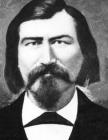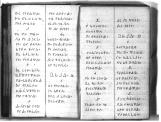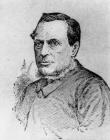2
The work of the early Pigeon Lake Mission was done by Ben Sinclair and his wife Margaret. Benjamin had met Rundle at Norway House and served as a lay preacher. Rundle had presided at Ben's and Margaret's marriage. The Sinclairs came to the region in 1847, at Rundle's request.4
Gerald Hutchinson:... So he had that kind of training in mission work that he brought here. He was officially the leader of the Pigeon Lake Mission for 5 years, along with a man named Witaskaman James. All of these men were Rundle enthusiasts in one way or another and had been recruited. And they carried this mission along and from archives, we have letters galore from these people writing Sinclair wondering how the work is progressing. All of these were written in syllabics and then translated. We only have access to the English translations.
5
Journal entry by Robert Rundle regarding work done at the Pigeon Lake mission.10 June 1848
Pigeon Lake, Alberta
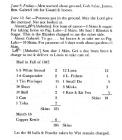
6
Benjamin Sinclair brought practical skills in growing crops and sawing lumber, as well as knowledge of the Bible and Cree syllabics. As northern Cree, the Sinclair's found their surroundings strange and unfamiliar, as well as being away from family and the customs of the north. The working relationship between Witaskaman James and Benjamin was troubled.8
Gerald Hutchinson:… James was from the region and among the competent men up here. They laughed at the strangeness of Ben Sinclair. The first time Ben Sinclair went to shoot a deer he missed, and they all laughed at him in his embarrassment. James had a cottage over at Battle Lake and I think Ben Sinclair was saying. "I am not going to live besides James" when it came to choosing a precise location for the mission. There were factors of this kind, that had lead them then away from Battle Lake up over the ridge and around the end of the lake-- they came across this place. But there was an old house already here but they found this spring-- this strong artesian spring-- that just rises out of the ground and flows year round. There were woods and fish in the lake…there was just everything that you could ask. And there was enough area here that could become gardens and fields. So this became the place. Rundle left Sinclair here in 1847 and returned to England.
9
The Reverend Henry B. Steinhauer.1855
?
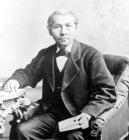 Credits:
Credits:Glenbow Archives NA-1010-21 Lowndes, J. M., Calgary, Alberta
10
Gerald Hutchinson:… Their first appointments from the Canadian Methodists were - and by Canadian it's the province of Upper Canada- were men named Thomas Woolsey and Henry Steinhauer. Steinhauer had been a native assistant at Norway House, a highly qualified man who spoke five languages including Greek and Hebrew. He was an extraordinarily well-educated man. So those two guys came out, but Steinhauer stayed in the region for the rest of his life and Woolsey stayed for seven years.
12
Gerald Hutchinson:… In Woolsey's time, the Christian church was still a First Nations, with worhsip in their language, still no land claims, still no sense at all of imminent takeover. But there was an increase of white men and visitors travelling through, of gentlemen on tour and this kind of thing. Surveyors were arriving and the gold rushes of California brought people through here as well. More and more Europeans were present in Woolsey's time.
13
Letter from Benjamin Sinclair to Mission Secretary Mason in Norway House.1849
Pigeon Lake, Alberta

